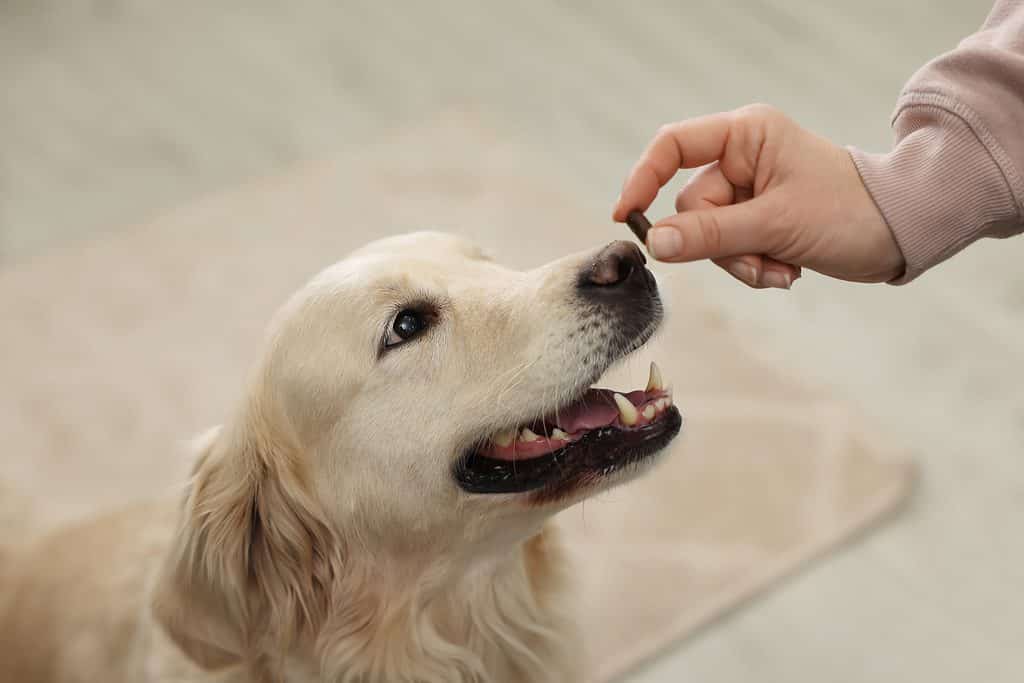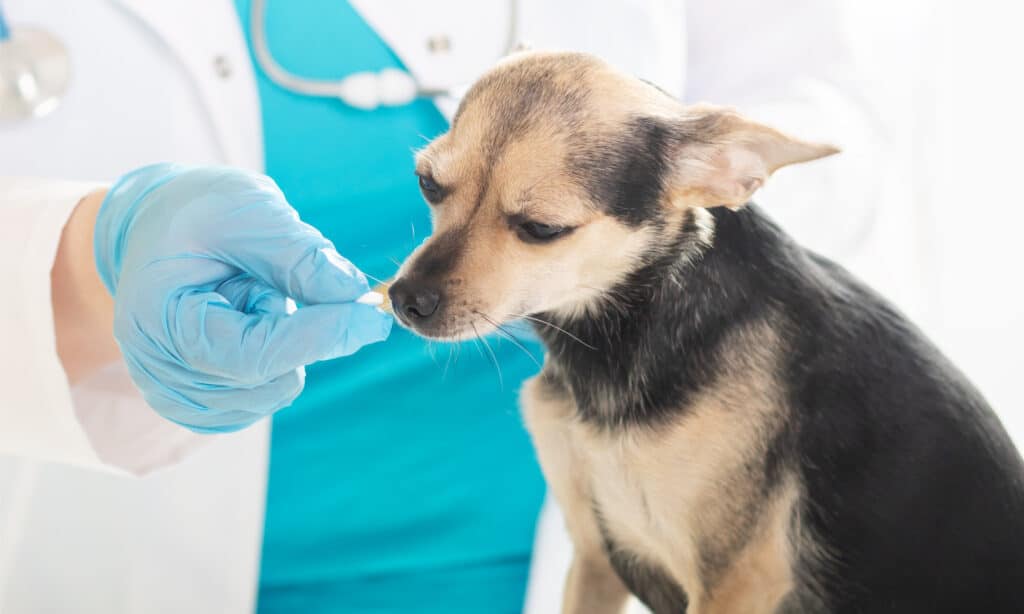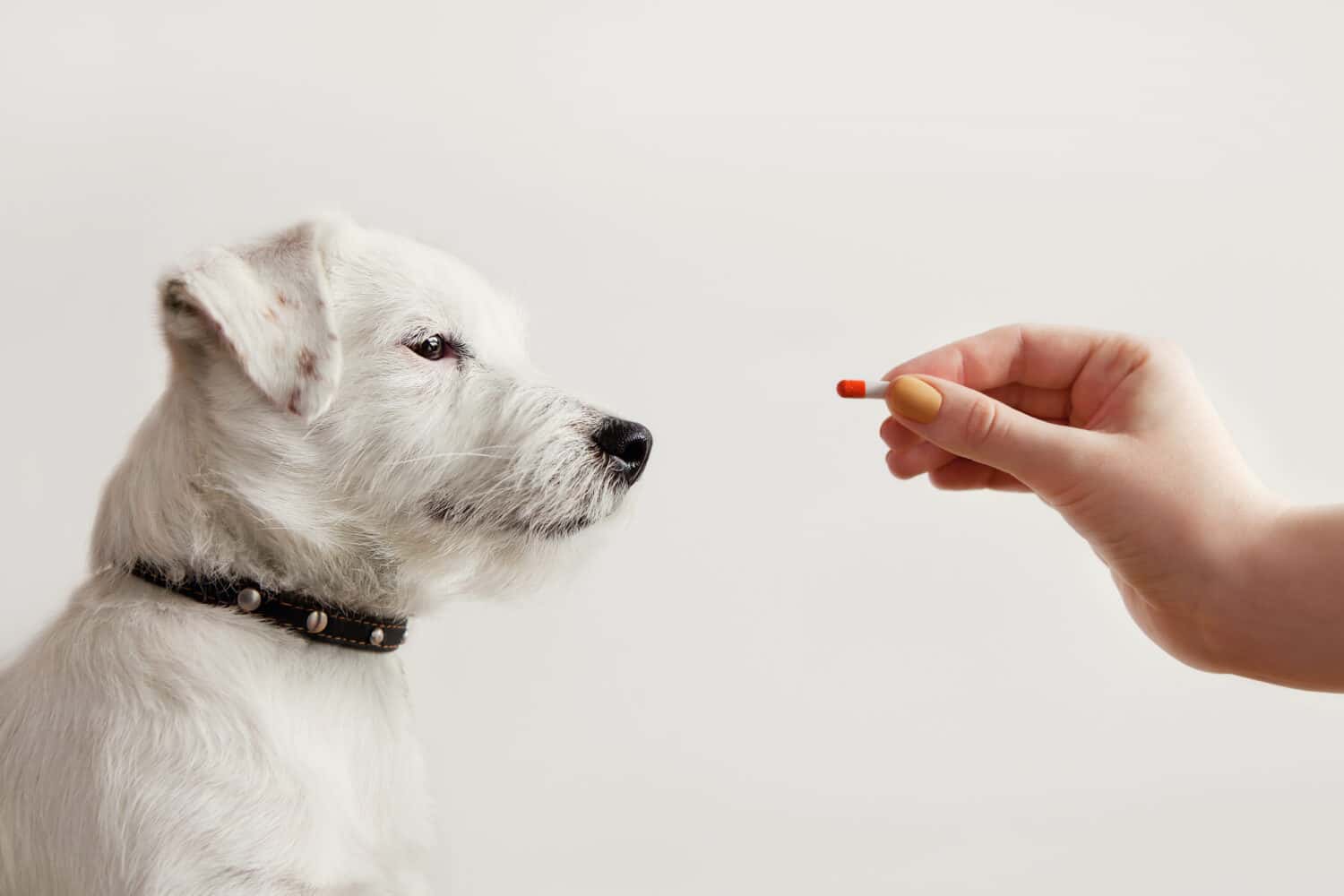Did your veterinarian just prescribe Clindamycin to your dog due to infection? Because you deserve to understand your pet’s medication, we discuss Clindamycin uses, doses, and side effects! Let’s discuss everything you need to know about this popular medication and how it can help your canine companion.
What Is Clindamycin?

This drug works by interfering with the bacteria’s ability to make protein, slowing bacteria production.
©Jaromir Chalabala/Shutterstock.com
Clindamycin is an antibiotic used to treat a variety of bacterial infections in humans and animals. Clindamycin works by interfering with the bacteria’s ability to make protein, ultimately slowing or preventing the reproduction of the bacteria within the body. As a result, the body is able to catch up and tackle the rest of the bacteria on its own.
Clindamycin is most effective against aerobic gram-positive and anaerobic gram-negative bacteria. This means it can fight various infections involving the skin, ears, teeth, and respiratory system.
Is Clindamycin Safe for Dogs?
Clindamycin is safe for use in dogs when following your vet team’s guidance. Just keep in mind that it is only safe in the form and dose that your veterinarian prescribes. Human forms of Clindamycin could contain higher concentrations than your dog requires, or liquid forms made for children could contain artificial sweeteners that are toxic to dogs. The only form of Clindamycin that your dog should take is the form that comes from your vet’s office.
Why Do Dogs Take Clindamycin?
Clindamycin can treat a variety of bacterial infections seen in our canine companions. Let’s list some of the most common reasons why vet’s prescribe Clindamycin for dogs below.
- Skin infections
- Dental infections
- Wound abscesses
- Respiratory infections like pneumonia
- Bone infections
Though Clindamycin is most often used to banish harmful bacteria, it can also be used off-label to treat protozoal infections in dogs. Some of the most common protozoal infections that Clindamycin treats include toxoplasmosis, babesiosis, and neosporosis.
How Is Clindamycin Given to Dogs?

Clindamycin can cause severe irritation of the esophagus if it becomes lodged in the throat.
©New Africa/Shutterstock.com
Veterinarians can prescribe Clindamycin in oral liquid, tablets, or capsule form. You can give this medication with or without a large meal, but you should never give it on its own as a dry pill. Clindamycin can cause severe irritation of the esophagus if it becomes lodged in the throat.
Dr. Amy Nicole Lewis, a veterinarian with Worldwide Veterinary Services told A-Z Animals that a lodged Clindamycin pill in the esophagus can lead to painful ulcerations and esophagitis. These dogs will often struggle with painful swallowing, decreased appetite, neck sensitivity, and holding their head and neck in an abnormal position. Esophageal irritation often requires veterinary treatment.
The best way to avoid any esophageal irritation when giving Clindamycin is to offer it with a small amount of food or liquid. You do not have to worry about this risk with liquid Clindamycin.
What Is the Dose of Clindamycin for Dogs?
To reiterate, you should never give your dog Clindamycin without your vet team’s approval. With that in mind, there is a standard Clindamycin dose that most veterinarians follow.
The standard dose of Clindamycin for dogs is 5 mg per pound of body weight every 12 hours or 10 mg per pound of body weight every 24 hours. It is most often given for seven to 10 days, but more severe infections may require anywhere from 14 to 21 days of treatment.
Are There Any Side Effects with Clindamycin Use in Dogs?

Clindamycin can cause side effects including vomiting, diarrhea, lethargy, and a decreased appetite.
©iStock.com/Yana Tikhonova
Clindamycin is a generally safe mediation, but just like any other prescribed medication, it can lead to a few minor side effects. Some of the most common side effects seen with Clindamycin use in dogs include:
- Vomiting
- Lethargy
- Decreased appetitie
- Increased rooling
- Diarrhea
- Esophageal irritation
Most of the above side effects can be avoided by offering your dog their dose with a small meal. However, have your vet assess your dog if they display any signs of esophageal irritation. Many dogs with esophagitis from pill irritation will require special medications to protect the esophagus and decrease acid production from the stomach. Your little one may even need to stop taking their Clindamycin until their esophagus irritation resolves.
How Do I Get Clindamycin for My Dog?
Clindamycin is a common prescription antibiotic that treats complicated bacterial infections in dogs. We suggest reaching out to your vet if you think your canine friend can benefit from the use of Clindamycin!
Ready to discover the top 10 cutest dog breeds in the entire world?
How about the fastest dogs, the largest dogs and those that are -- quite frankly -- just the kindest dogs on the planet? Each day, AZ Animals sends out lists just like this to our thousands of email subscribers. And the best part? It's FREE. Join today by entering your email below.
Thank you for reading! Have some feedback for us? Contact the AZ Animals editorial team.








